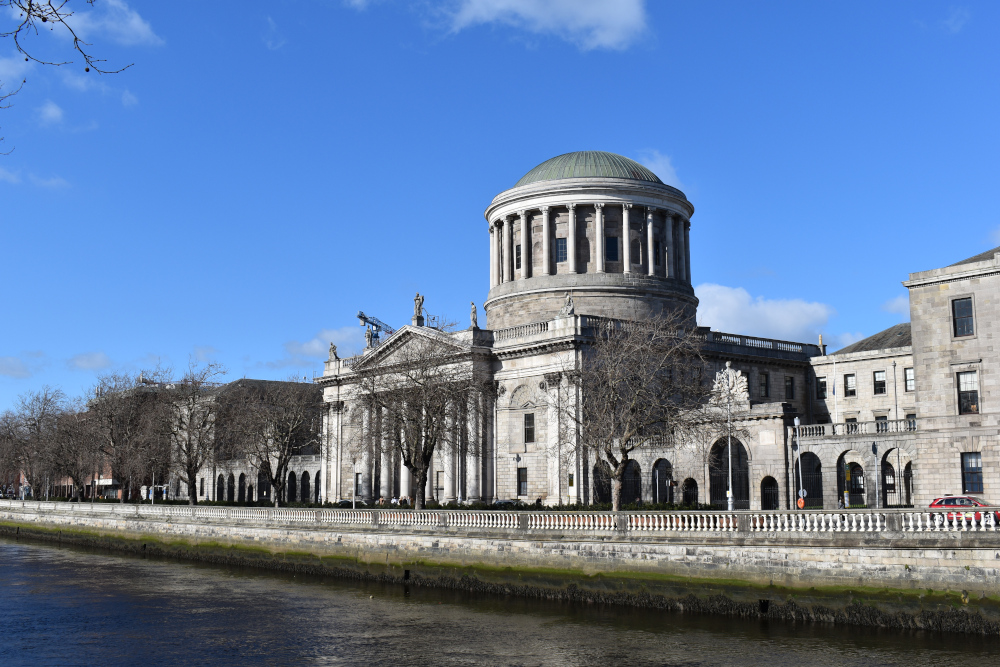High Court: Revenue and TAC erred in interpretation of s.87(1) of the Taxes Consolidation Act 1997

The High Court has determined that Revenue and the Tax Appeals Commission erred in determining that debt forgiveness granted to a company should be treated as a trade receipt pursuant to s.87(1) of the Taxes Consolidation Act 1997.

About this case:
- Citation:[2024] IEHC 402
- Judgment:
- Court:High Court
- Judge:Mr Justice Oisín Quinn
Delivering judgment for the High Court, Mr Justice Oisín Quinn clarified that “the plain ordinary meaning of the words connotes (in the context of corporation tax) a company claiming a deduction for a debt and such deduction being allowed and thereafter the creditor writing off all or part of that debt. The plain and ordinary meaning of the words ‘debt’ and a ‘deduction being allowed’ for the debt do not equate to lands or assets or a write off being allowed for lands or assets which drop in value.”
Background
The appellant company took out a loan in December 2006 for €9.5 million to purchase lands in Co Galway for residential development, secured on both the lands and on another nearby property. The lands were purchased but the development did not proceed due to the financial crisis.
From 2010, the company had been writing down the value of the site in its accounts on the basis of the then deteriorating property values, and was accumulating losses which could be carried forward. The debt to the bank was reduced by payments made by the company from its own resources, principally the sale of 36 houses from another development.
In return for a final payment of €250,000, the bank agreed in 2016 to release the security for the loan and to write-off the balance due, being €6,043,555.
In the company’s income statement for the financial year ended 31 October 2016, the company’s gross profit on a turnover of €541,850 was €15,350. In accordance with the appropriate financial reporting standard FRS 102, the write-off was included as a credit sum below the gross profit line on the income statement on the basis that it did not represent a trading profit.
Accordingly, the write-off was not included as a taxable item in the company’s corporation tax return for 2016, and so the trade losses it carried forward stood at €7,177,270.
On 25 May 2021, the respondent determined that the write-off should be treated as taxable income, reducing the losses carried forward to €1,143,174. The company appealed to the Tax Appeals Commission (TAC).
The TAC determined the matter by reference to s.87(1) of the 1997 Act, which states: “Where, in computing for tax purposes the profits or gains of a trade or profession, a deduction has been allowed for any debt incurred for the purposes of the trade or profession, then, if the whole or any part of that debt is thereafter released, the amount released shall be treated as a receipt of the trade or profession arising in the period in which the release is effected.”
The TAC determined that where the ‘debt’ was actually a loan which the company had used to buy land; and where the land had decreased in value and its value was written down in the books of the company; and where this increased the losses of the company, which were being carried forward; then the claiming of losses (by virtue of the value of the land having been written down) should be treated as coming within the meaning of the words “a deduction has been allowed for any debt” in s.87(1).
The company appealed by way of case-stated to the High Court, asking whether the Commissioner was correct in her interpretation of s.87(1).
The High Court
Mr Justice Quinn considered inter alia the relevant provisions of the 1997 Act, the legal principles attaching to cases stated and the approach to statutory interpretation of tax statutes.
The judge determined that the core finding of the TAC, that the writing down of the loan was the allowance of a deduction of a debt, was a question of law, and so it was inappropriate to view the matter through the prism of the taxpayer bearing the burden of proof or to consider the principles of curial deference.
The court also considered the respondent’s argument that by reference to s.76A(1) of the 1997 Act, the taxable amount under Case I of Schedule D is the amount “booked for that period in the P&L account” and as the company had included the write-off in its profit and loss account, it should have been included in its calculation of taxable profit for that period.
Noting that this argument had not been decided in the TAC’s determination nor had the case-stated addressed it, the court determined that this argument fell outside of the case stated. Nonetheless, Mr Justice Quinn determined that this argument was incorrect as s.76A(1) is not a charging provision, rather it sets out that the profits of trade are to be calculated in accordance with generally-accepted accounting practice subject to adjustments allowed or required by statute.
The court also observed that it was accepted as an agreed fact that the company’s gross profit for 2016 was €15,350, which did not include the value of the release of the debt, and that the company’s accounts were prepared in accordance with FRS 102 and that the write-off was properly included as a credit sum below the gross profit line on the basis that the write-off was not a trading profit.
The judge also highlighted that this argument if correct, would render s.87(1) pointless insofar as it relates to a company, as it would mean that the write-off fell to be treated as a taxable profit irrespective of whether a deduction had ever been claimed for the debt. The court noted that the respondent attempted to circumvent this issue by arguing that s.87(1) should be read as meaning a write-off is chargeable to tax and when that occurs a company can then claim a deduction for the original loan.
Mr Justice Quinn was satisfied that “if the Oireachtas had intended to provide that a full or partial release of a debt should be treated as a trade receipt for Case I Schedule D tax in circumstances where the debt took the original form of a loan and where that loan had been used to purchase an asset and where that asset had thereafter been appropriately written down in value, then it could have so provided”.
The court continued to say that “the plain ordinary meaning of the words connotes (in the context of corporation tax) a company claiming a deduction for a debt and such deduction being allowed and thereafter the creditor writing off all or part of that debt. The plain and ordinary meaning of the words ‘debt’ and a ‘deduction being allowed’ for the debt do not equate to lands or assets or a write off being allowed for lands or assets which drop in value.”
Emphasising that the company had not claimed a deduction for the debt and so had not been ‘allowed’ a deduction for same, the court clarified: “The Lands purchased by the loan are not legally the same thing as the debt due by the Company to the bank. They exist separately and independently of each other.”
The court concluded that “the plain and ordinary meaning of the words in the section are clear, obvious and self-evident and make sense in that meaning in the context of the provision itself and the wider tax provisions. An item (the release of some or all of a debt) that would not otherwise be chargeable to tax as a trade profit becomes chargeable if a deduction for the debt has previously been allowed and thereafter the taxpayer is released from part or all of the debt. The amount of the charge is the amount of the release. This is what the words of the provision say and mean. There is no proper basis for either inverting the meaning of the provision or interpretating the word ‘debt’ to mean an ‘asset purchased using a debt’.”
Conclusion
Accordingly, the High Court determined that the TAC was incorrect in determining that the writing down of values in the accounts of the company meant that a tax deduction had been allowed in computing the profits of its trade for the purpose of s.87(1), and that the forgiveness of the loan gave rise to a receipt taxable as income.
Arlum Limited v The Revenue Commissioners [2024] IEHC 402











